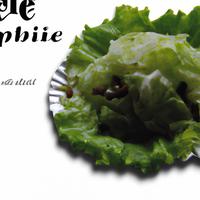
1 serving (100 grams) contains 15 calories, 1.4 grams of protein, 0.2 grams of fat, and 2.3 grams of carbohydrates.

Log this food in SnapCalorie

Nutrition Information
Calories |
35.7 | ||
|---|---|---|---|
% Daily Value* |
|||
| Total Fat | 0.5 g | 0% | |
| Saturated Fat | 0.1 g | 0% | |
| Polyunsaturated Fat | 0 g | ||
| Cholesterol | 0 mg | 0% | |
| Sodium | 47.6 mg | 2% | |
| Total Carbohydrates | 5.5 g | 2% | |
| Dietary Fiber | 3.1 g | 11% | |
| Sugars | 1.9 g | ||
| protein | 3.3 g | 6% | |
| Vitamin D | 0 mcg | 0% | |
| Calcium | 85.7 mg | 6% | |
| Iron | 2.1 mg | 11% | |
| Potassium | 461.9 mg | 9% | |
* Percent Daily Values are based on a 2,000 calorie diet. Your daily values may be higher or lower depending on your calorie needs.
Food Attributes
Source of Calories
About Cooked lettuce
Cooked lettuce is a versatile green often used in Asian and European cuisines as a gentle, nutrient-rich addition to warm dishes. While traditionally eaten raw in salads, cooking lettuce enhances its tender texture and can mellow its mild flavor. Rich in water content and low in calories, cooked lettuce retains key nutrients such as vitamins A, C, and K, as well as folate and small amounts of fiber. These contribute to immune support, healthy skin, and bone strength. Its potassium content aids in maintaining proper muscle and heart function. Cooking can improve digestibility but may reduce some heat-sensitive vitamins. Common preparations include steaming, stir-frying, or adding it to soups for a subtle flavor boost. While it’s not a significant source of protein or fat, cooked lettuce serves as a light and healthy side dish or ingredient to complement nutrient-dense meals.



